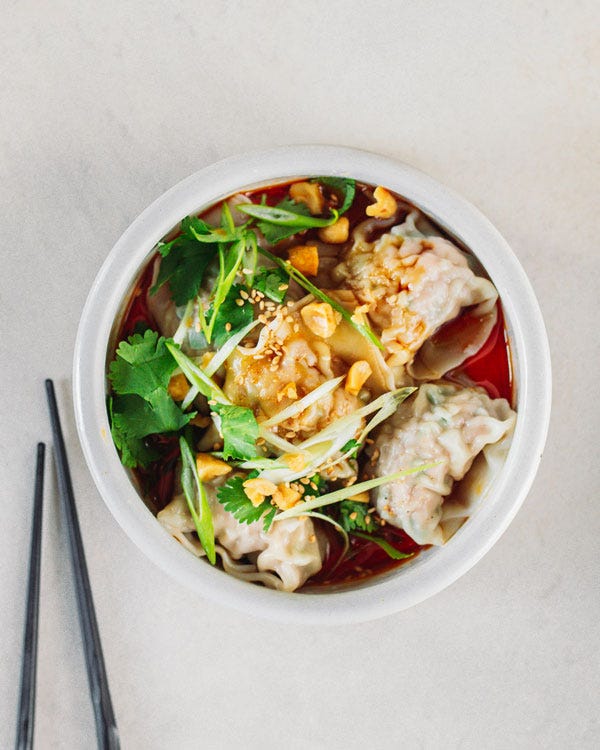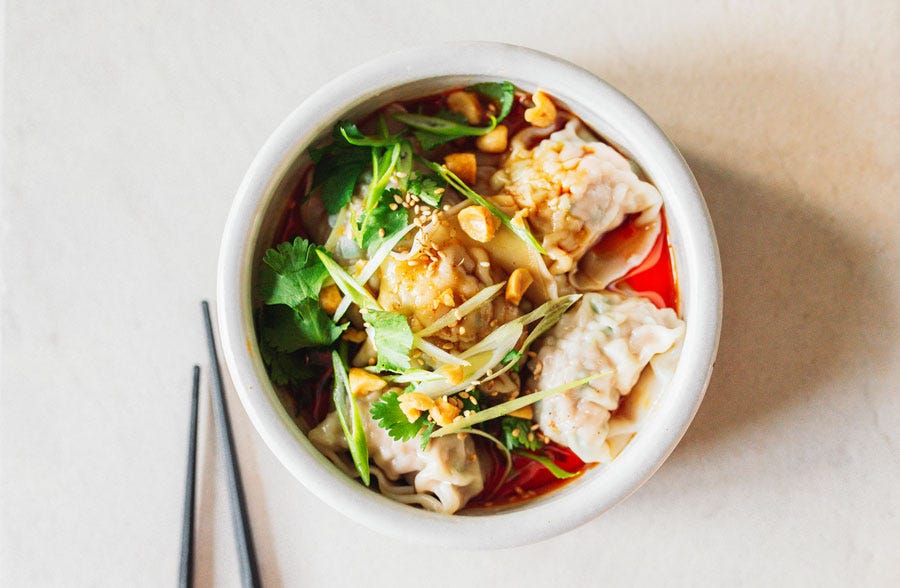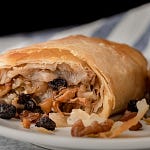In this episode we talk about a recipe for Sichuan-Style spicy wontons that creates a deep sense of identity and a strong bond to ancestry.

In this episode we talk about a recipe that creates a deep sense of identity and a strong bond to ancestry.
Let Food be Thy Medicine
I connect with Monica Lo, of Sous Weed, who shares her family’s tradition of dumpling making, her belief that food is medicine, and her culinary cannabis platform.
Episode Transcript
🎧 Click here for the full, interactive transcript of this episode 🎧
Sous Vide at Home: The Modern Technique For Perfectly Cooked Meals by Lisa Q Fetterman photography by Monica Lo
Edibles: Small Bites For The Modern Cannabis Kitchen by Stephanie Hua & Coreen Carroll
Sous vide machines can be confusing, but Monica recommends Joule.
You can connect with Monica on her website, Sous Weed – remember you have to 21 – or on her Instagram account.
Medicated Sichuan-Style Spicy Wontons
In this episode we talk about a recipe for Sichuan-Style spicy wontons that creates a deep sense of identity and a strong bond to ancestry.
Ingredients
Wontons
1 pound ground pork
2 teaspoon kosher salt
1 tablespoon cane sugar
1 teaspoon white pepper, ground
1 1/2 ounces chopped Chinese chives
1 tablespoon minced garlic
2 teaspoons Shaoxing wine
40 squares wonton wrappers
Sauce
1/4 cup medicated chili oil
1/4 teaspoon ground Sichuan peppercorn
1 tablespoon toasted sesame oil
3 tablespoons Chinkiang vinegar
2 tablespoons soy sauce
1 tablespoon sugar
1 tablespoon minced garlic
1 tablespoon toasted sesame seeds
1/3 cup chopped cilantro
2 tablespoons chopped peanuts
Instructions
To make wonton filling, combine ground pork, salt, sugar, white pepper, Chinese chives, garlic, and Shaoxing wine in a medium bowl and knead until uniform, about 1 minute.
To form the wontons, set a wrapper on your work surface in the shape of a diamond. Place a tablespoon of filling in the center of the wrapper. Gently moisten the edge of the wrapper with water. Dry your hands before folding one corner of the wonton wrapper up to form a triangle. Seal the edges, pushing all air out as you work. Pull the left and right corners together and pinch to seal. Transfer wonton onto a parchment paper lined baking sheet. Repeat until finished.
To make the sauce, combine medicated chili oil, ground Sichuan pepper, toasted sesame oil, Chinkiang vinegar, soy sauce, sugar, and garlic in a small bowl and mix well. Set aside until ready to serve.
To cook, bring a large pot of water to boil. Add 12 wontons in to cook, about 4 minutes. Cooked wontons should float. Drain wontons and transfer to serving bowls.
Spoon the spicy sauce on top and make sure all wontons are covered. Garnish with toasted sesame seeds, cilantro, and chopped peanuts.
Let’s Connect!
Find me on Instagram @leigh_olson, join the Family Recipes, Traditions, and Food Lore community on Facebook, or subscribe to The Heritage Cookbook Project.
Do you have a recipe, tradition, or story to share? Send me an email at connect@theheritagecookbookproject.com.
If you would like to further support this project, there are a couple of ways that you can become a patron subscriber. Choose one of the paid tiers here, purchase something from my Amazon wish list, or buy me a tea - I know it says Buy Me a Coffee, but I’m a tea gal.
If you aren’t able to support monetarily, sharing this with a friend really helps to let the algorithm enforcement agencies that people are enjoying these stories and want more.






















